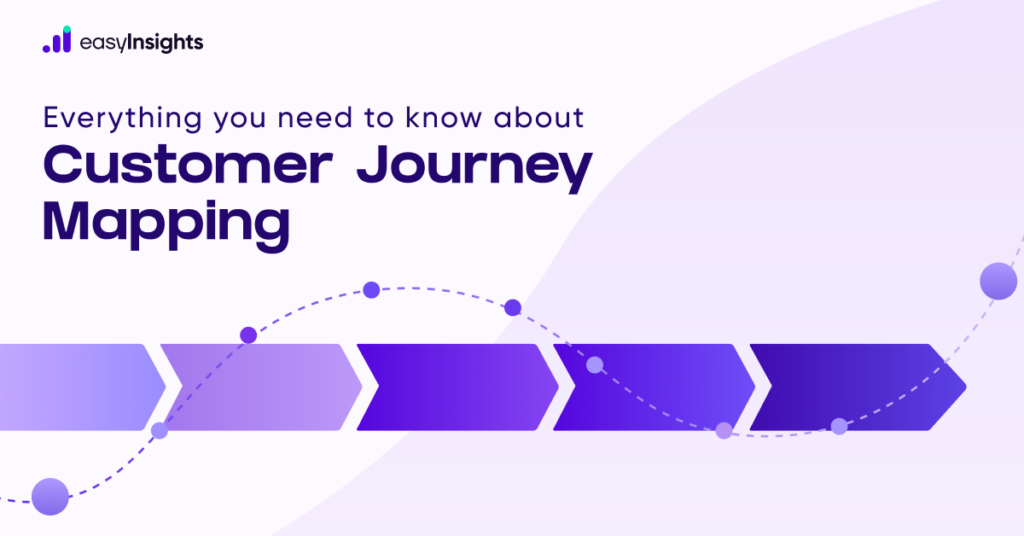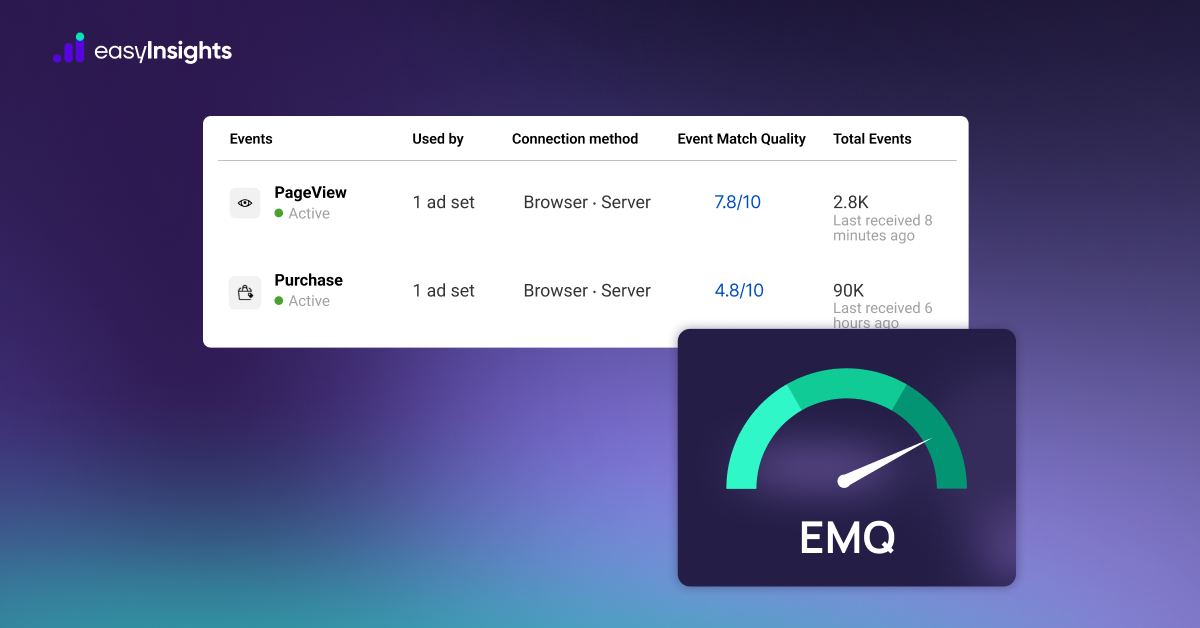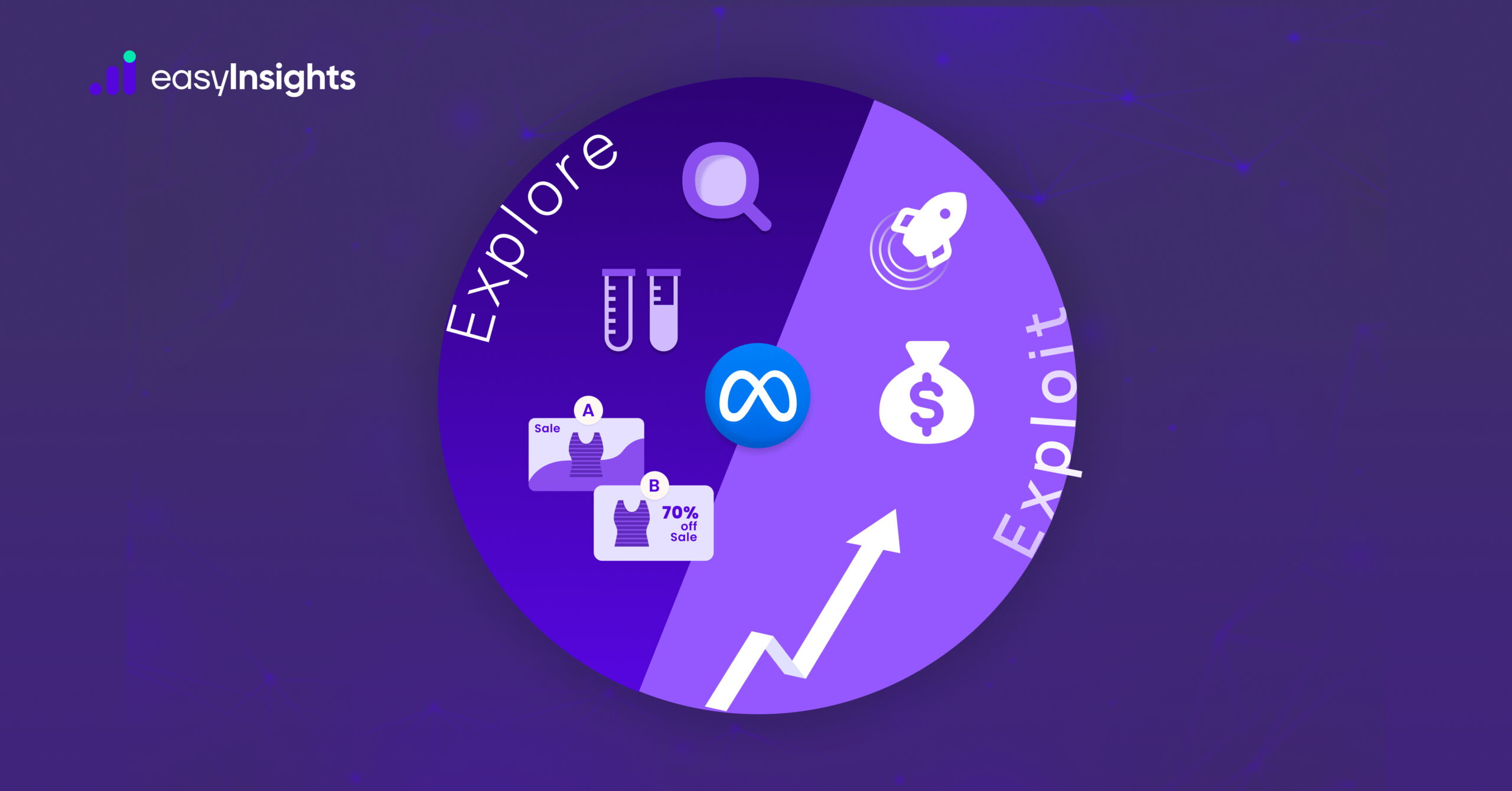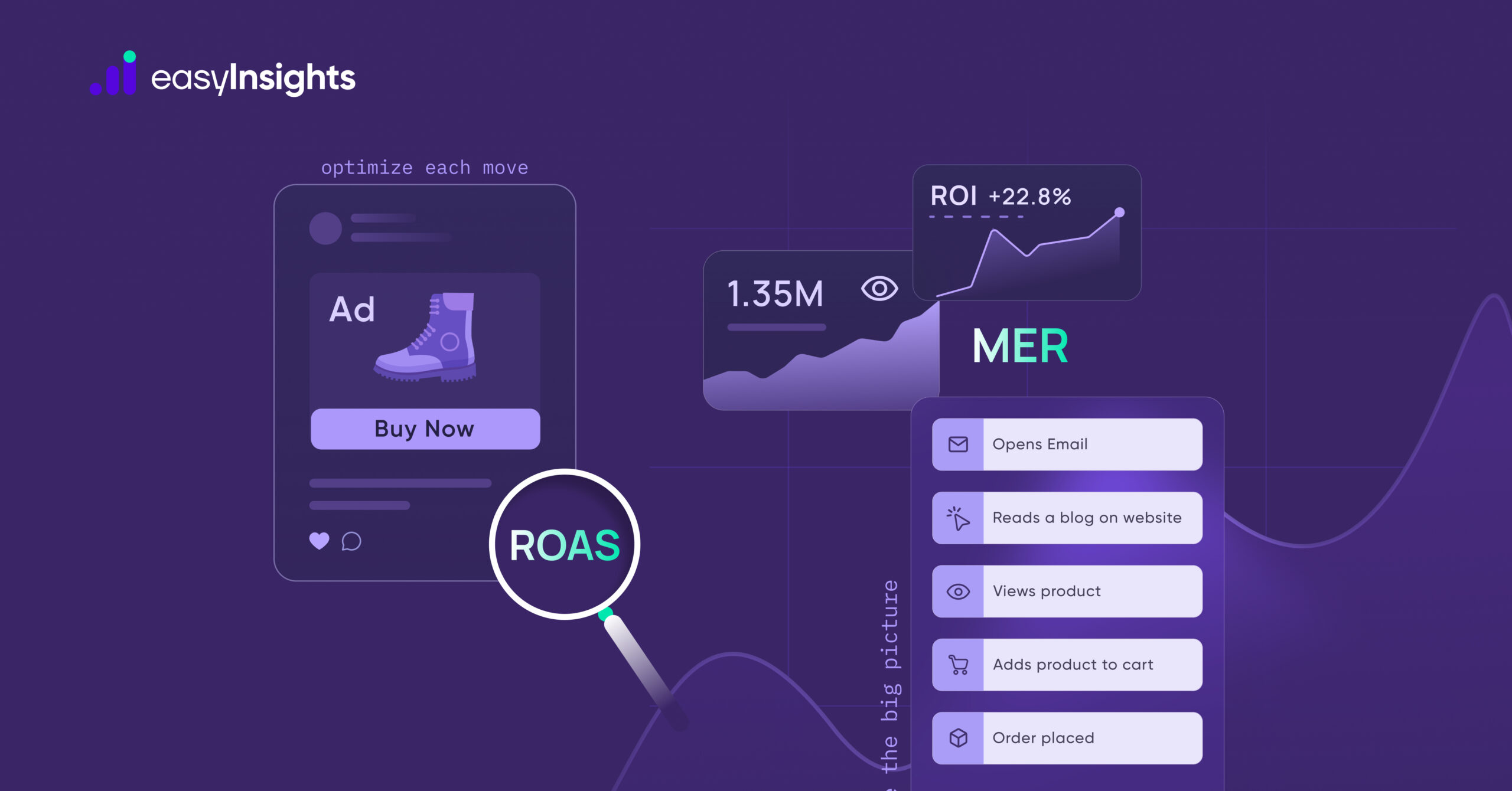
A great customer experience (CX) is no longer just a “nice to have”, it’s the foundation of sustainable growth in today’s customer-centric world. The brands that truly succeed are those that understand their customers deeply, anticipate their needs, and personalize interactions across every touchpoint.
This is where customer journey mapping comes in. It’s the practice of walking in your customer’s shoes, visualizing each interaction they have with your brand, and identifying both friction points and opportunities. Done right, it transforms raw data into actionable insight – making sure customers are at the heart of your decisions, not processes or tools.
In this guide, we’ll walk through everything you need to know about customer journey mapping, and why EasyInsights is becoming a game-changer by allowing brands to track every visitor session, uncover every touchpoint, and build unbiased attribution models powered by first-party data.
Jump ahead to:
What Is Customer Journey Mapping?
A customer journey map is a visual or data-driven representation of the entire experience a customer has with your brand; from the moment they first discover you, to purchase, to retention, and even advocacy.
It helps businesses step outside their internal assumptions and instead see the journey from the customer’s perspective.
A strong journey map answers:
- How do customers discover you?
- What motivates them at each stage?
- Where do they experience friction?
- What channels and touchpoints matter most?
- What ultimately drives them to buy, churn, or return?
While many marketers create journey maps with sticky notes and diagrams, the real power comes when data is layered in session by session. This is where EasyInsights redefines mapping – by collecting first-party data across every visit, click, and conversion event to show the exact flow a user takes before becoming a customer.
Benefits of Customer Journey Mapping
Creating a journey map takes effort, but the ROI is undeniable.
Customer Journey Mapping helps you:
- Improve customer experience and retention by fixing friction points.
- Shorten the time between key touchpoints to accelerate conversions.
- Deliver a personalized strategy for different customer segments.
- Reduce response and turnaround times.
- Refine your content and messaging based on what customers actually need.
Additional benefits include:
- Consistent customer experiences across teams.
- More opportunities for cross-selling and upselling.
- Personalized and timely communication.
- Deeper insights into customer behavior.
- Stronger, long-term customer relationships.
And when combined with session-level tracking from EasyInsights, these benefits multiply – because you’re no longer relying on guesswork or sampled analytics, but on actual behavior data captured at every touchpoint.
Creating a Customer Journey Map
Here’s a step-by-step process to get started:
1. Establish Clear Goals & Target Personas
Define your objectives first – are you mapping to improve retention, reduce drop-offs, or optimize acquisition? Build personas that represent your target audience segments. EasyInsights enriches this step by allowing you to analyze cohorts your way – whether it’s new vs. returning visitors, high-LTV customers, or specific campaign cohorts.
2. Define Customer Expectations
Use surveys, feedback, and behavioral data to learn what your customers expect at each stage. With EasyInsights, you don’t just rely on survey samples – you analyze real session data to uncover patterns in expectations vs. outcomes.
3. Identify Customer Touchpoints
List every channel, from ads and social media to email, chat, and on-site interactions. Go beyond your website — customers might interact with you on review sites, marketplaces, or even offline.
EasyInsights excels here because it uncovers every touchpoint, from first touch to closed-won. No matter where a customer journey begins, EasyInsights makes sure it’s tracked and attributed correctly.
4. Map Customer Emotions & Pain Points
For each touchpoint, ask:
- What action is the customer taking?
- What emotion drives it?
- What obstacles stop them from moving forward?
5. Determine Resources & Mapping Styles
Decide which type of journey map works best for you: current state, future state, tactical, or persona-based. Map it against your existing resources and where you need reinforcement.
6. Test the Customer Journey
Walk through the journey yourself – mimic your customer’s path. Use EasyInsights data to validate – does the behavior align with your assumptions? Are there drop-off points you didn’t see before?
7. Make Adjustments
Once insights are gathered, refine your website, messaging, and touchpoints to remove bottlenecks and improve conversion. With EasyInsights’ real-time session-by-session data, you can continuously iterate, not just once a quarter.
What are the Best Tools to Map Customer Journey?
Tools for customer mapping can assist you in managing several brand accounts. Here are a few customer mapping tools that you can consider.
1. UXPressia
The customer journey mapping that is produced with this online application has a clean, straightforward layout. If you have a diverse clientele, UXPressia also provides persona templates for other businesses, which might save you some time.
2. Powerpoint / Google Slides
Consider using these tools to develop customer journey maps if you want to keep things simple and avoid getting overwhelmed by using too many platforms. It’s comparatively easy to create a very attractive customer journey map because to the variety of elements, shapes, and artwork available.
3. Adobe InDesign
InDesign is a great option for your customer journey mapping if your company already uses Adobe Creative Suite. If you have a dedicated in-house graphic design staff that can help with the creation of a more complex customer journey map, this is a fantastic alternative. There are a lot of options in Indesign, from using unique shapes to using customizable colors.
4. Gliffy

With click-and-grab components, you can create a customer journey map that resembles a more complex flow chart using this cool online tool. This might be useful if you have clients with more complicated sales funnels or layers to fill in.
5. EasyInsights
More than just visualization: a session-by-session journey tracker that collects first-party data across every visit, enabling custom attribution models, cohort analysis, and unbiased journey insights.
Unlike static tools, EasyInsights doesn’t just help you draw maps – it helps you power them with live data. That’s the difference between a picture of your customer journey and an engine that actively optimizes it.
Relevant Reads from EasyInsights
- Understand why journey mapping matters and how to start with [Everything You Need to Know About Customer Journey Mapping] EasyInsights
- Learn how to activate and use first-party data effectively in campaigns with [First-Party Data Activation Platforms] EasyInsights and [How to Use First-Party Data in Digital Marketing] EasyInsights
- Explore how to establish solid foundations for first-party data strategies in [Establishing First-Party Data Strategies] EasyInsights
- Understand broader value optimization across customer touchpoints in [What is Customer Value Optimisation] EasyInsights
- Activate real-time data into ad platforms with full-funnel attribution in [Activate your First-Party Data to Increase ROAS for Ecommerce] EasyInsights
Final Words
Customer journey maps are no longer just about sticky notes on a wall. In 2025, they are data-driven blueprints for customer experience, marketing efficiency, and growth.
While tools like UXPressia or InDesign can help visualize the journey, EasyInsights takes it a step further by capturing session-by-session first-party data and enabling businesses to build their own unbiased attribution models.
With EasyInsights, you can:
- Track every touchpoint from first click to purchase.
- Analyze cohorts exactly how you want – by campaign, persona, or channel.
- Attribute revenue fairly with your own model, not a black-box algorithm.
- Continuously refine the customer journey with live behavioral insights.
In short: If customer journey mapping is the “what,” EasyInsights is the “how.”
Book a demo with EasyInsights today!








